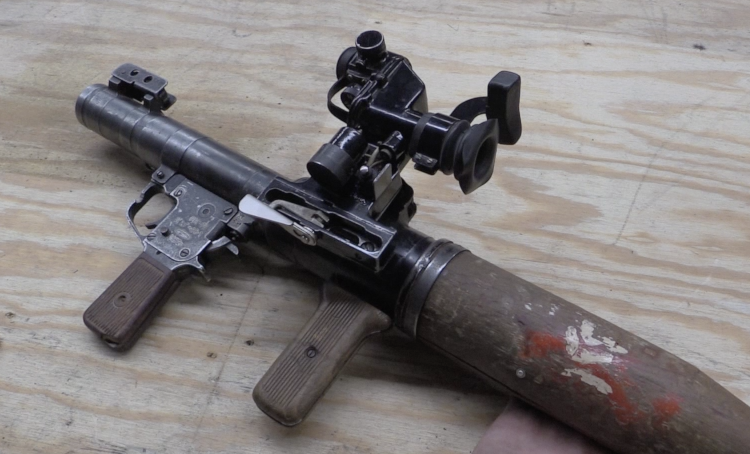This is lot #3124 in the upcoming RIA Premier Auction. It was scheduled for April, but has been postponed – check their web site for upcoming Online Only auctions every month, though!
The Russian government was the largest purchaser of Smith & Wesson No.3 revolvers, buying more than 300,000 in total. These purchases began with guns bought directly from S&W, also included guns purchased from Ludwig Loewe in Germany, and by the 1880s, the Tula Arsenal in Russia had tooled up to produce the guns under license. A total of about 35,000 were made there between 1886 and 1893, before they were replaced by the Model 1895 Nagant revolver.



Somewhere, I got the sense that the upward-rolling grip style was, at least in part, intended to allow spent percussion caps to fall clear of the action. Since I have no shooting experience with percussion caps, I don’t know how realistic this is.
It was a common “pistoleer’s” trick with the Colt and other single-action revolvers to flip the muzzle up when recocking the weapon. This was to facilitate hooking the thumb of the shooting hand over the hammer; then, simply snapping the revolver back down to level with the other fingers resulted in the held-back hammer being cocked as the revolver literally moved away from its position.
In the process, many shootists who used the percussion versions also flipped the revolver sideways, to toss the spent cap out before it could be carried around as the cylinder rotated. If this happened, it could fall off the nipple when the cylinder reached the 5 o’clock position (as seen from the rear), get caught between the cylinder and the frame, and jam the weapon.
This procedure was unnecessary on the metallic-cartridge Colts and etc., but some shootists who had “cut their teeth” on the older percussion models continued to do it through learned muscle memory.
One such was Julio Cárdenas, a captain in the Villistas. And it apparently cost him his life on 14 May 1916. While he was doing this bit of legerdemain by force of habit, several irritated American soldiers plus one ex-Villista scout shot him several times.
https://en.wikipedia.org/wiki/Julio_C%C3%A1rdenas
cheers
eon
I get the feeling that some of these saw limited service during the Great Patriotic War…
C and R senal also examined these revolvers in the context of The Great War.
Wherein they mentioned the reason for the spur under the trigger guard, which only the Russian No.3s possessed. This handgun was meant initially for cavalry, and the Czarist authorities felt the spur gave a better grip while cocking or reloading on horseback. Othias at C&Rsenal gave a convincing demonstration of this.
mr jatt Mp3 New Punjabi Song,Single Tracks Latest song download also Listen Latest Music Albums Online in High Quality at Mrpendus.in
mr jatt
Thanks For This Great Article. May You Bring This More in Future. Mplyrics
I must say that if I had been issued with this pistol, I would not have been happy to have it replaced by the Nagant. Going from a .44 with simultaneous ejection to a gate loaded .30 does not strike me as any sort of advance.
Although the officers’ version of the Nagant was double action, in practice I think you have to fire that piece in single action to have any sort of accuracy, and the “benefits” of its gas seal system are theoretical at best.
All told, it was a big step backwards for the Russians when they got rid of their Smith & Wessons.
“…I would not have been happy to have it replaced by the Nagant…”(C)
It is only until You have to wear a few days this piece of iron weighing like two Nagant. 😉
I prefer a gun I can reload in less than the time a Nagant takes. Going for a gate loading revolver in 1895 was a great leap backwards.
I have learned a lot of information from your sharing, thanks a lot. Please continue sharing such interesting information.